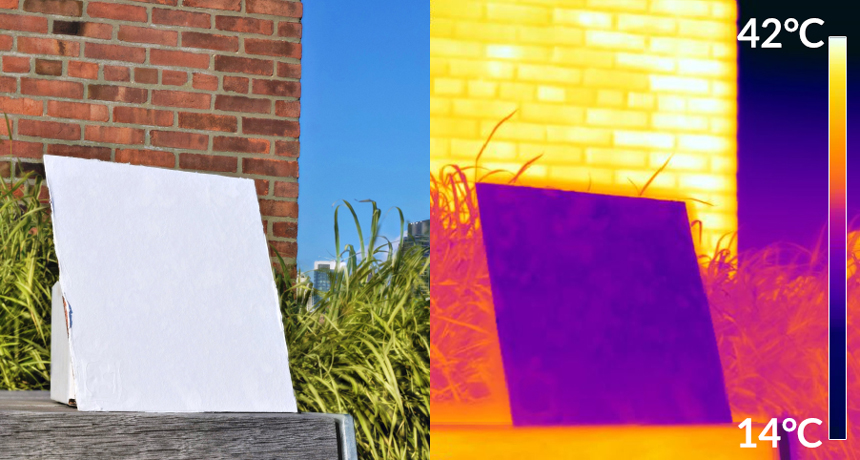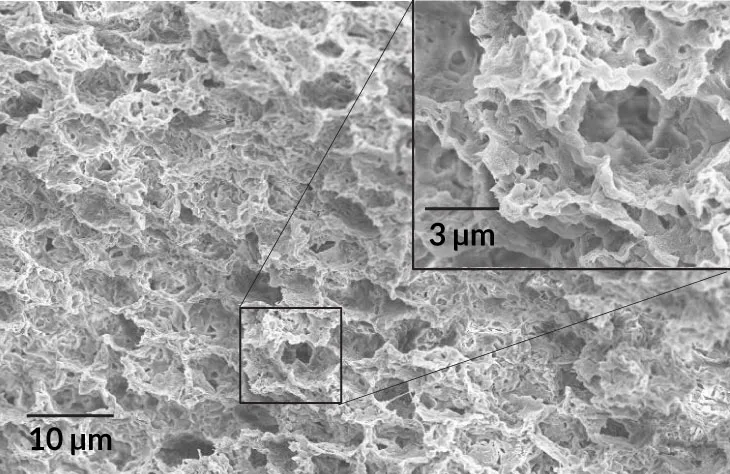This reflective paint could keep sunbaked buildings cool
Its structure deflects nearly all incoming sunlight

WARDING OFF WARMTH A new heat-resistant polymer coating could keep sunbathed buildings or cars cool. A heat map (right) reveals how much cooler a panel coated with this white polymer (left) is than the scorching brick wall behind it.
Jyotirmoy Mandal








